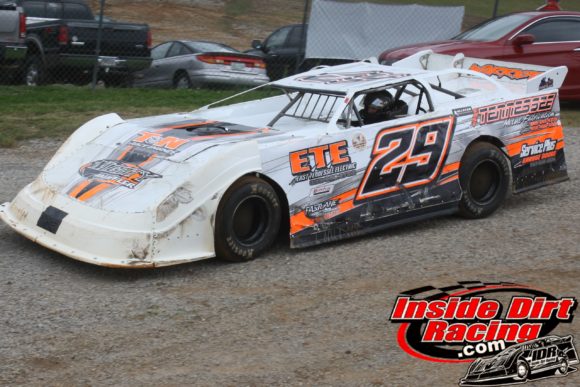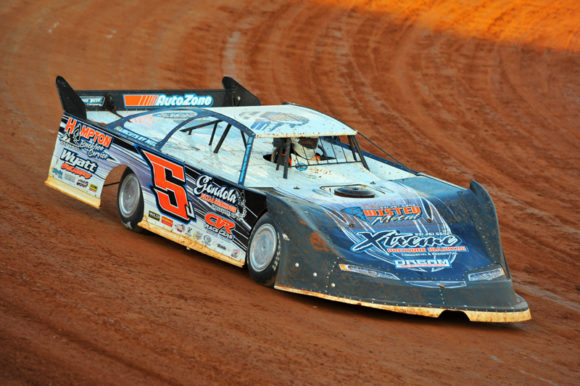There’s an old saying in racing that goes something like “If you ain’t cheating, you ain’t trying”. To some degree that’s almost certainly true of not only racing but pretty much every sport contested on the planet. But the form of dirt racing that seems to raise the greatest amount of suspicion among fans and competitors alike is Crate Late Model racing.
For those who may not know, a crate engine is one that is built on an assembly line(primarily by General Motors) that is supposed to be identical in form to all other crate engines. In other words, a track or series that holds Crate Late Model racing has, in theory at least, all cars on a level playing field in terms of horsepower.
However, many doubt that such is the case. In a recent poll I conduct on Twitter I asked the question “What are your thoughts on Crate Late Model racing?” A full 54% of the more than 250 respondents chose the answer “Lots of cheating” with another 42% selecting “Some cheating”. Only 4% of those who participated in the poll answered “No cheating”.
Despite safeguards put in place by the manufacturer, ways have been found to “enhance” the performance of crate engines. Some of the series that sanction Crate Late Models go to great lengths to assure that the engines used in their races have not been tampered with wrongfully. However, races that run as unsanctioned events may or may not be checked as stringently.
Driver Matt Henderson offered his thoughts on that very subject via Twitter during the time my poll was running. “Unsanctioned vs. a real sanction is two different things. @NeSmithRacing or @FASTRAK_SE I promise cheaters get caught.” Henderson tweeted.
Recently, InsideDirtRacing.com asked two very successfully Crate Late Model drivers from the east Tennessee region to offer their thoughts on this particular form of the sport. Rusty Ballenger for Seymour is a two-time United Crate Racing Alliance champion who has won multiple events over the past few seasons. Jesse Lowe of Crossville also has numerous race wins under his belt, scoring double-digit victory numbers over the past couple of years in both sanctioned and unsanctioned Crate Late Model races.
Ballenger addressed the issue of so-called “blueprinted” engines. A blueprinted engine is one that has been taken apart in an attempt to improve it. Shaving the engine’s heads in such a way that the power plant remains legal to an extent would be an example of something that makes an engine a blueprinted one.
“I kind of like what the Fastrak deal is doing where no blueprinted motors are allowed,” Ballenger stated. “If we had a $6,000 buy rule for the motor itself, like it comes from GM. Say if so-and-so wins and we get second, we can buy that motor for $6000 and know it hasn’t been blueprinted because you’re not allowed to do that. That way you know he’s got the same thing you’ve got. I’d like to see that.”
Ballenger believes the blueprinting itself isn’t necessarily the issue, particularly regarding the newer crate engines. It’s other enhancements that can make a bigger difference.
“Mainly the blueprinting is the big deal,” the driver of the No. 29 Warrior Race Car declared. “I’ve had one that’s blueprinted and one that isn’t and I can’t feel a big difference. But I think some of them are doing more than blueprinting.”
A crate engine costs approximately $5900 as it comes off the assembly line. However, Ballenger argues that they are not all created as equally as advertised.
“These crate motors, they build them on an assembly line, so my motor might be different from this guy’s because they just throw them together,” Ballenger pointed out. “But these new motors I think are just as good as a (legally)blueprinted motor.”
Ballenger believes that the rule books currently in use are mostly sufficient. But there are some changes he would like to see made.
“I think they are doing pretty good,” he said. “I’d like to see them check tires more than motors. It’s not that much to protest a tire.”
As far as protests are concerned, Ballenger states that protesting and getting protested are not as clear of an issue as many people think. Other issues may go into a driver’s decision to protest another competitor to check for legality or a decision of whether to allow a post-race teardown or not.
“With some of the local racing, it’s so cheap to tear one down but it costs so much more to put one back together,” Ballenger explained. “Some of the tracks where we go it may be $600 to protest but it’s going to cost more than that to put it back together. I understand why guys refuse to tear down because they’ve got a big race the next week. But then again, everybody on social media assumes you’re illegal if you don’t tear down. It’s kind of a double edged sword.”
Lowe has found himself in the position of having to defend himself as a result of social media speculation after his numerous wins in 2017. He contends that there is a simple fix for stopping all of that criticism.
“Mainly they need to just follow their rulebook,” Lowe said of the tracks and series. “A lot of the race tracks have really good rules and they have the right rules in place, but they don’t enforce them. They’re scared that they’ll make somebody mad or run somebody off. The biggest thing is just to enforce what they put in the rulebook at the beginning of the year.
“They spend all this time and they have all these meetings to come up with all this stuff and then they don’t enforce it because they don’t want to upset anybody and that’s what’s hurting the sport more than anything,” the driver of the No. 5J CVR Race car continued. “There are a lot of motors getting by and a lot of tires getting by because the tracks -and I’m not saying all race tracks but some race tracks- don’t want to pay somebody a little extra money to put cars through tech. We’re spending $30,000 on these race cars and if somebody’s doing something to gain a couple of tenths, that’s the difference between first and fifteenth.”
Lowe believes that this form of the sport doesn’t necessarily need more rules. It simply needs to go by the rules that are already stated.
“The bigger the rulebook, the more money that comes into racing,” he explained. “People are going to find a way to get around it. It’s one of those deals where I don’t care what the rules are as long as they enforce what they have. If you say a tire has to punch 55 at all times then you should be able to punch it at anytime and it should punch 55. If it doesn’t, you’re wrong. It’s that simple.”
Lowe argues that more consistency and less bias would actually improve a track’s reputation, and thus, its car counts over the course of the long run.
“At a lot of race tracks, it’s whoever complains the most and yells the loudest is the one who gets away with it,” he said. “If you’re consistent on the rules in these bigger races and actually tech these bigger races then someone who may not race all the time can feel like they have the same shot as someone who races with that series or that track weekly. I think that would pull more cars in because they would know they’ve got a shot to win or run top-5 and they know they’re not going to get out-motored or out-tired because they’re in the rules and somebody else is not.”
Lowe would like another old saying, “Cheaters never prosper” to become the new way of things in racing.
“We spend a lot of time and money to make sure we have speed within the rules. If someone is coming in and is outside the rules and not getting condemned for it then it makes us feel like we’re wasting our time. It discourages people who are within the rulebook from racing at certain tracks or certain series.”
Racing has always had room for gray areas throughout its history. Crate Late Model racing was established as a lower cost form of the sport with the intention of removing some of that gray. Some believe that has indeed happened while others remain unconvinced.









